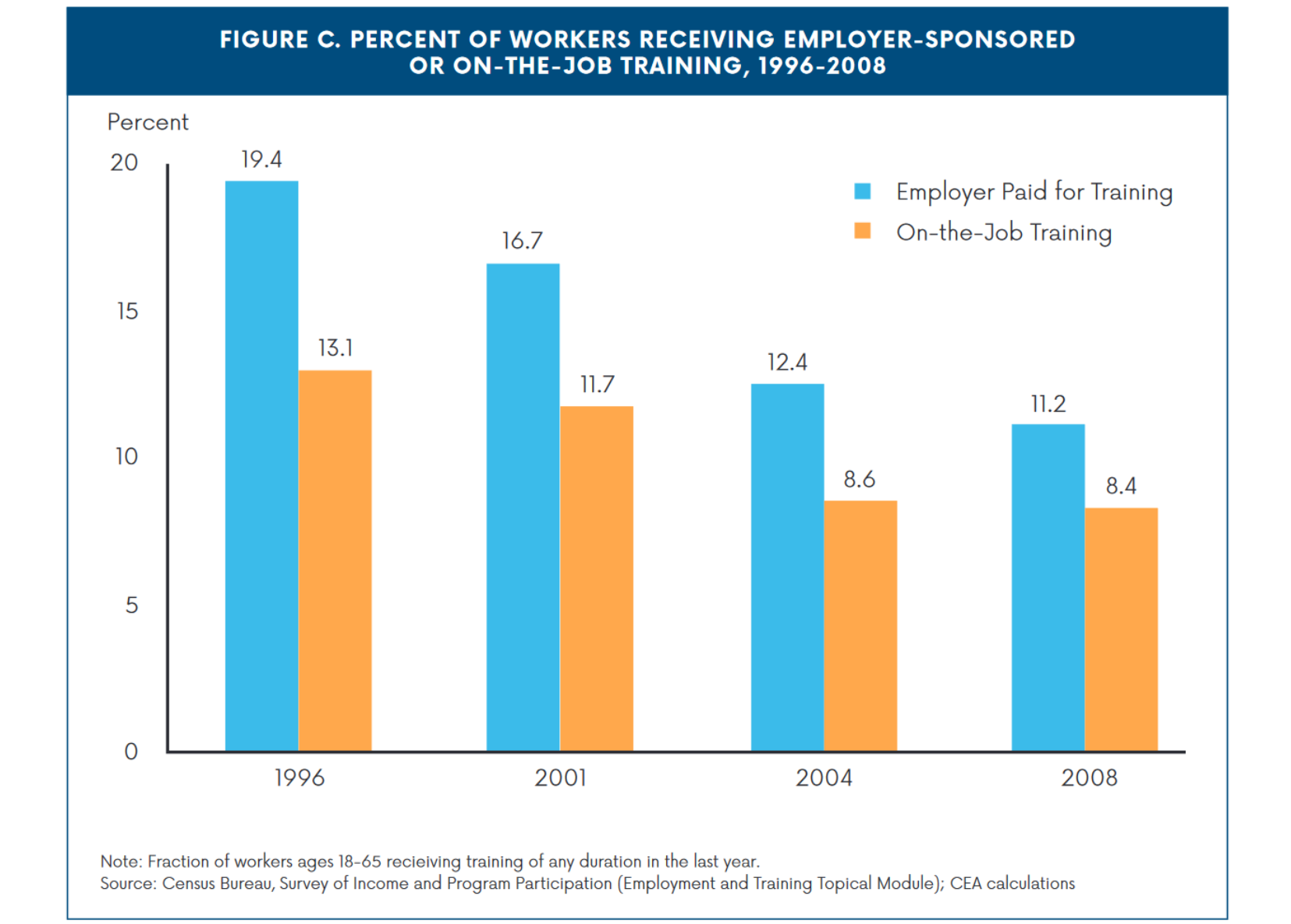Your grandpa wouldn't have been impressed by Amazon's plan to retrain workers. Neither should you.
Amazon workers are going back to school — and the midcentury model of labor


Amazon workers are going back to school. Last week, the e-commerce behemoth announced a new $700 million program to retrain 100,000 of its 300,000 American employees by 2025. The training will be available to employees at all levels of the company's supply chain. "[Amazon's] new program aims to move a large swath of workers up one or two rungs on the skills ladder," The New York Times explained, "turning warehouse floor workers into IT technicians and low-level coders into data scientists."
Given how often we're told that robots are coming for Americans' jobs, and that more skills are the route to higher wages, this would seem like welcome news. And to an extent, it is. But the fact that Amazon's announcement is news-worthy at all — as opposed to business-as-usual — is dramatic proof of how far off track our economy has gotten.
There was a time when American companies viewed training new hires or retraining existing employees as just the cost of doing business. Back in the midcentury, unemployment rates well under 4 percent were relatively common. Faced with such tight labor markets, employers couldn't afford to be picky about who they were hiring and simply made do by training whoever they could. That roughly a third of the American workforce was unionized only increased the pressure on businesses further.
The Week
Escape your echo chamber. Get the facts behind the news, plus analysis from multiple perspectives.

Sign up for The Week's Free Newsletters
From our morning news briefing to a weekly Good News Newsletter, get the best of The Week delivered directly to your inbox.
From our morning news briefing to a weekly Good News Newsletter, get the best of The Week delivered directly to your inbox.
A lot has changed since then.
A recent overview of the evidence by the Aspen Institute's Future of Work Initiative found that all business spending on training has been cut by half as a share of GDP, just since the mid-2000s. Between 2007 and 2012, only one in five workers received any sort of training from their employers — down from one-in-three as recently as 1996. More specifically, worker training that was paid for by an employer fell 42 percent over that time period, and on-the-job training fell 36 percent.

To make matters worse, the job training that remains tends to go to well-paid and well-educated workers — precisely the people who need it the least — because it comes as part of a jobs benefit package rather than as a general company policy. Meanwhile, working Americans have been left to fend for themselves: to learn new skills on their own time, and to pay for it out of their own pocketbooks.
Public spending could've stepped into the breach. But the key government programs that invest in worker training and development have been cut by 40 percent. The government investments aimed at helping workers displaced by foreign competition are also low and inadequate. All told, U.S. spending on this kind of thing now stands at 0.1 percent of GDP, which is well below all the other developed Western nations.
A free daily email with the biggest news stories of the day – and the best features from TheWeek.com
What happened? At bottom, it's all about bargaining power.
It costs businesses time and money to train their workers, and that cuts into profit margins. It's an inconvenience companies would rather avoid — and thus foist onto individual workers themselves — if they can get away with it. Back when unions were common and powerful, workers were able to collectively bargain and force their employers to take on those costs. But since the 1970s and 1980s, practices like union busting, right-to-work laws, industry deregulation, tighter monetary policy, and globalized free trade have all conspired to reduce unions to a shadow of their former selves.
That same right-wing turn led to the spending cuts for the public training programs that could have replaced the individual business training programs. But it did something else too: Cuts to public investment and a much more hawkish Federal Reserve did away with the extraordinarily low unemployment rates of the midcentury. Sure, we're seeing another burst of similarly low unemployment, but such job booms have been much rarer since 1980. And many metrics show the ongoing boom still isn't as strong as 2007 or 2000.
When unemployment is high, businesses have leverage to be picky. Instead of training new hires or retraining staff, they can just pick people who already have the skills they want from the pool of the unemployed. They can demand that job applicants come with higher educational degrees. They can also generally suppress wages across the board. But just like strong unions, sustained low unemployment shifts the balance of power back towards workers, forcing employers to eat more costs.
As the economist and Roosevelt Institute fellow J.W. Mason noted, the conventional wisdom we've all been told is that workers need to upgrade their skills to get higher wages. But this puts the burden of adaptation entirely on individual workers and arguably gets things backwards: When low unemployment and tight labor markets force businesses to make do with whatever workers they can get, then not only do wages go up, but employers start taking a lot of the training burden back onto their own shoulders. "When [employers] have to struggle to find workers, then they take the steps they need to make sure those workers are worth the money," Mason told the Times.
It's not just Amazon either. Other big players like Walmart recently announced training programs as well. As I said, the current jobs boom is a bit weak compared to previous ones, and sometimes these training offerings can just be marketing efforts without substance. But the flurry of announcements should be taken as a sign that employers are starting to feel the heat. We can see this in other ways too: Job postings are requiring less education from workers than postings a few years ago, businesses are more willing to hire people with felony backgrounds, and so on.
We've arguably become so used to employers having all the power — and workers having to jump through all the hoops — we've forgotten that it can work differently. Amazon's new training program is welcome — but in a healthy economy, it would just be normal.
Jeff Spross was the economics and business correspondent at TheWeek.com. He was previously a reporter at ThinkProgress.



